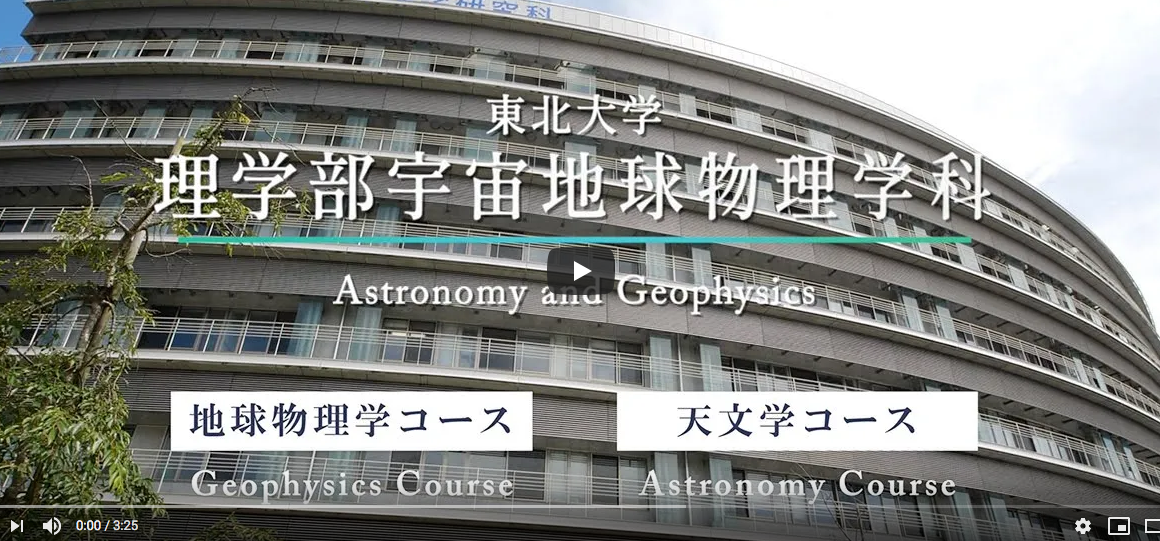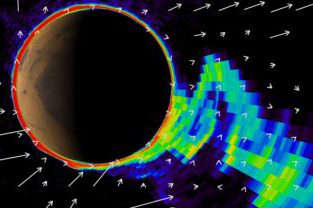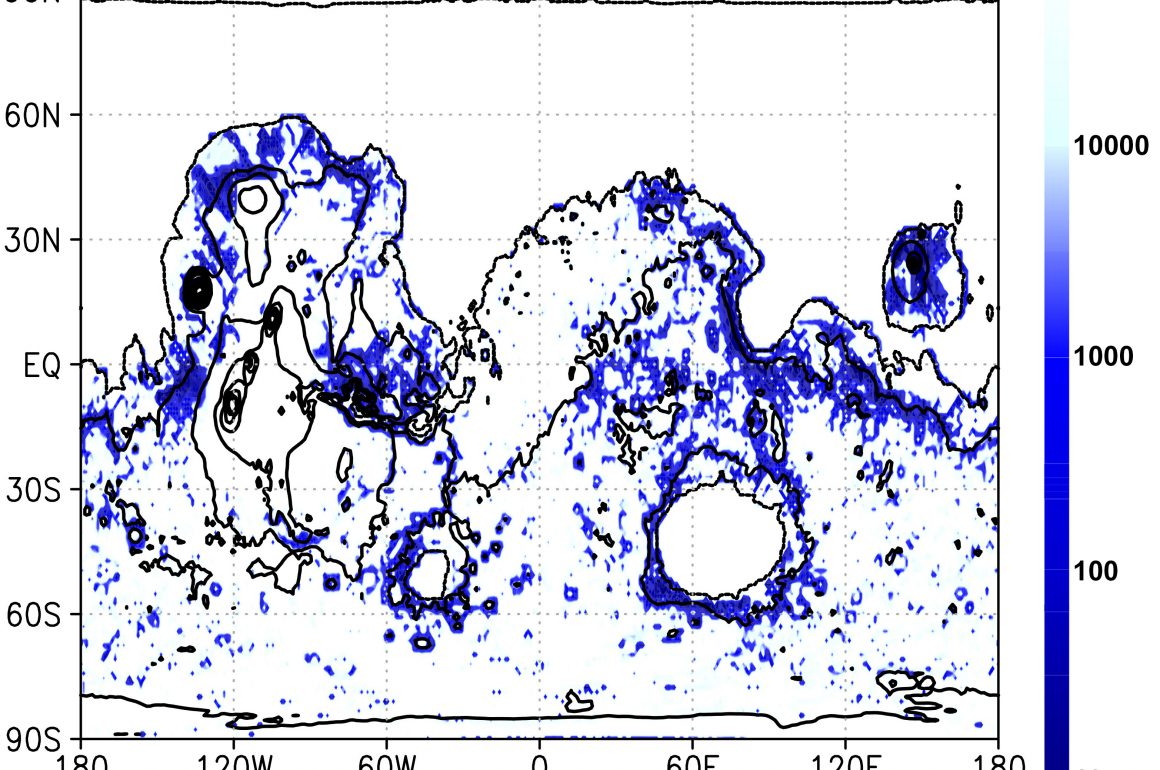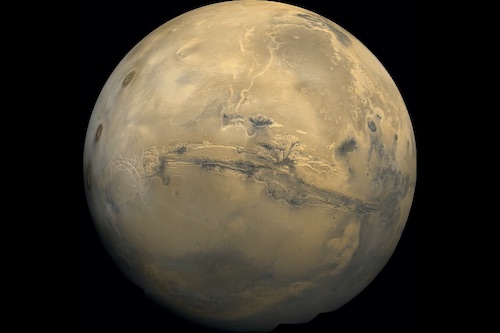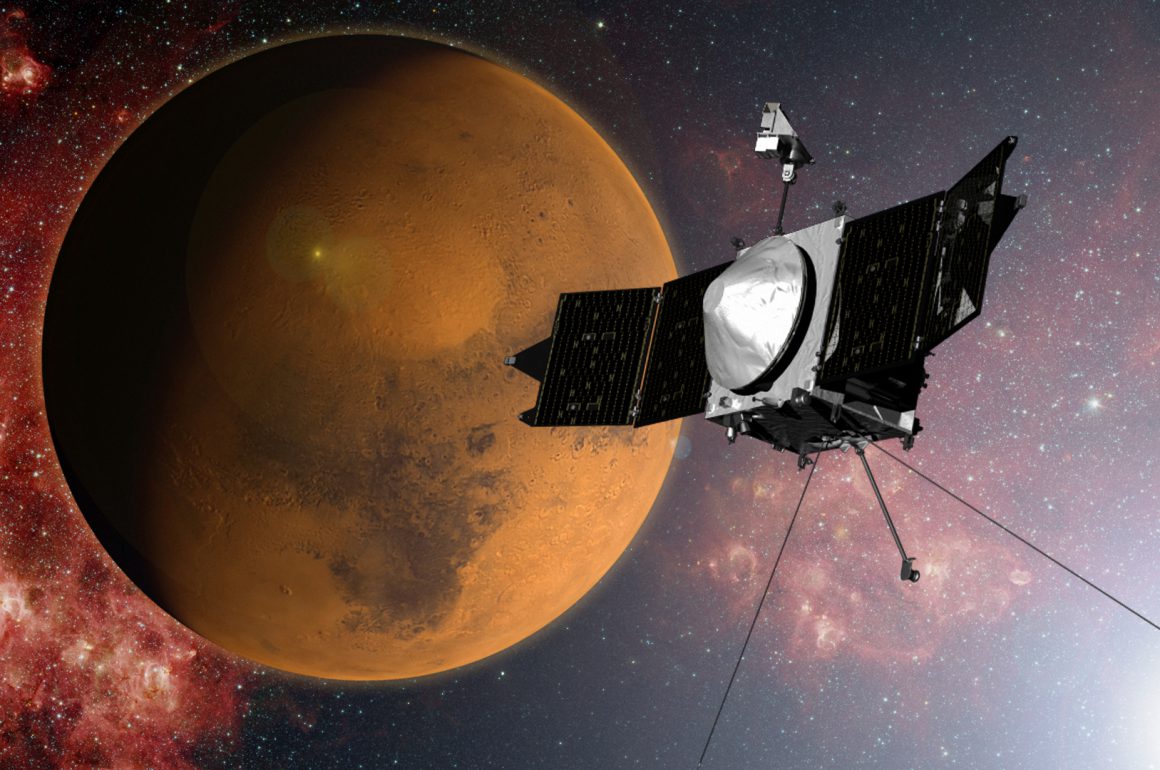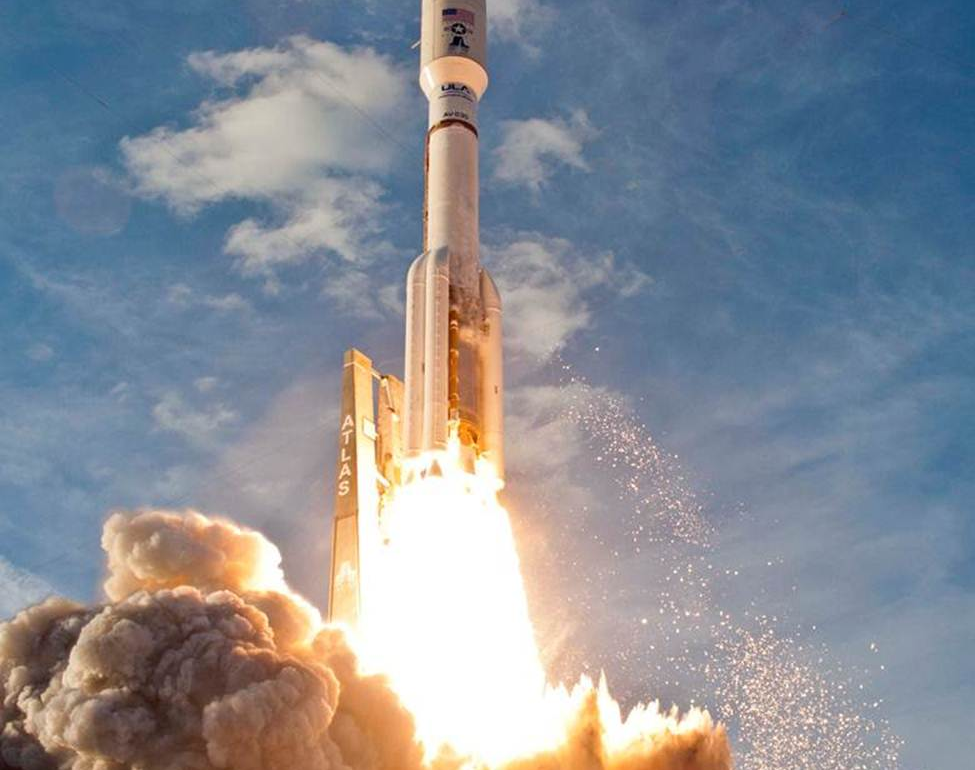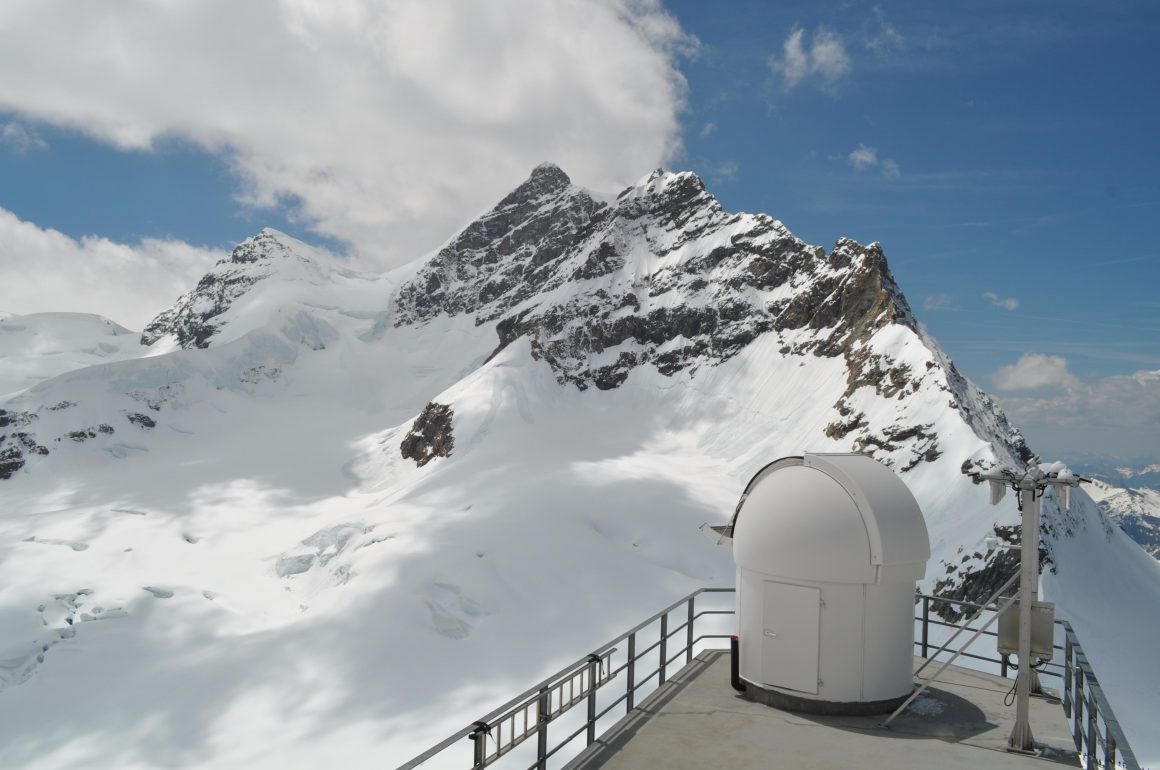The solar wind and solar EUV radiation stripe away planetary atmosphere into space. The atmospheric escape phenomenon is not only a compelling subject to study the physical mechanisms themselves, but is also important for understanding the evolution of planetary atmospheres, the diversity of planetary atmospheres, and the conditions under which habitable planets can be established. We have developed electromagnetic hybrid (particle ions/fluid electrons) and magnetohydrodynamic (MHD) simulation codes that comprehensively describe the interaction between the solar wind and the ionosphere of unmagnetized planets. We have been clarifying the physical mechanisms and pathways by which the ionized atmospheres of planetary origin...
On the surface of Mars, there are many “flowing water topographies” (valley networks), which are thought to be traces of liquid water that formed about 3.8 billion years ago. However, the mechanism to maintain the warm climate necessary for their formation is unknown. This is because the Sun at that time was fainter than it is today, and the atmosphere was not sufficiently warmed by a carbon dioxide-rich atmosphere. We have developed a new model of the Martian climate and streamflow based on the Earth’s climate model, and have shown that Mars at that time could have had a cool...
We are developing a full particle simulation model using the DSMC method to study the slow hydrodynamic escape of the atmosphere of an Earth-like planet. Slow hydrodynamic escape is one of the mechanisms of atmospheric escape into space. Proxima b, which are found in the habitable zone around M-type stars, and Trappist-1, e, f, and g, which are found in the habitable zone around M-type stars, may be in a slow hydrodynamic escape state. They are also thought to have occurred on Earth and Mars in the early days of formation. The amount of atmosphere escaping by slow hydrodynamic escape...
Solar Energetic Particles (SEPs) are electrons, protons, and heavy ions with energies ranging from a few keV to a few GeV that are ejected by solar flares and coronal mass ejections, and they propagate through interplanetary space and descend into planetary atmospheres, causing ionization, dissociation, and heating of atmospheric molecules. When a large SEP event occurs, the dissociation of oxygen and nitrogen molecules in the polar regions of the Earth increases NOx and HOx, and ozone is reduced by about 50%. In contrast to Earth, where the effects of SEPs on the atmosphere have been well studied by both observation...
Recent studies found that the water vapor has been transported up to 100 km during planet-encircling dust event (PEDE) in both north and south hemispheres using the Atmospheric Chemistry Suite (ACS) and Nadir and Occultation for Mars Discovery spectrometer (NOMAD) onboard the ExoMars Trace Gas Orbiter (TGO) [Vandaele et al.,2019; Fedorova et al., 2020; Aoki et al., 2020]. The unexpected water at high-altitudes could intensify the loss of water from Mars to space, as the result of photo- dissociation to hydrogen at upper atmosphere [Chaffin et al., 2017; Heavens et al., 2020]. Although mesospheric circulation on Mars is thus largely...
By escaping from the atmosphere and exploring planets in space, we can obtain valuable data that cannot be obtained from the ground. Our group has been involved in more than 16 space exploration missions including JIKIKEN, Akebono, Geotail, Nozomi, Kaguya, Reimei, AKATSUKI, HISAKI, MAVEN, TGO, BeppiColombo, MMX, and JUICE, and have a lot of great experients of international and domestic collaborations. We have been exploring the unknown with world-wide teamwork. We have recently investigated the ionospheric escape by the NASA’s MAVEN spacecraft, and vertical coupling and water cycle in the Martian atmosphere by the ESA’s TGO spacecraft. We are also...
‘Atmospheric trace species’ are the minor constituents which abundances are less than 0.1 %. For example, carbon dioxide and methane are famous as greenhouse gas and ozone, nitric oxide, and carbon monoxide are famous as air pollutants. In spite of the small abundance, they have impacts on the atmospheric temperature or circulation and sometimes have interactions with lives. Therefore, behaviors of trace species are important for ‘atmospheric environment’. We are investigating the variations of the trace species mainly with spectroscopy. Many trace species can be observed simultaneously by ground-based solar absorption measurement with Fourier transform spectrometer. Stratospheric ozone and some...
Light arriving from a planet contains a lot of information about the planet’s atmosphere, and this information can be retrieved by analyzing the light in the direction of its wavelength, as called spectroscopy. In particular, the infrared region contains a lot of finger-prints, and the infrared spectrometer is a device that splits the light into its wavelengths. To observe the atmospheres of other planets, it is desirable to install infrared spectrometers on spacecraft to avoid the effects of the Earth’s atmosphere. However, the performance of infrared spectrograph on board satellites is limited. This is because increasing the performance makes the...
more
Archives
Tags
INFORMATION
Entrace Exam. info.
Do not hesitate to contact and freely visit our lab
Lab Booklet:
Dep. Booklet:
Entrace Exam. also found in Department of Geophysics web page



